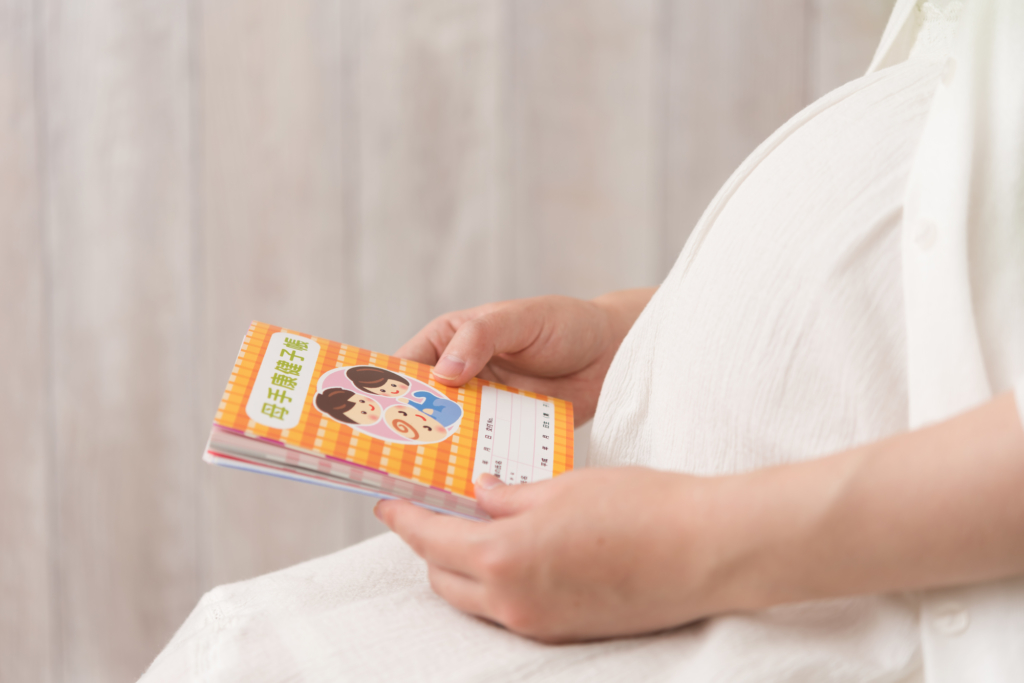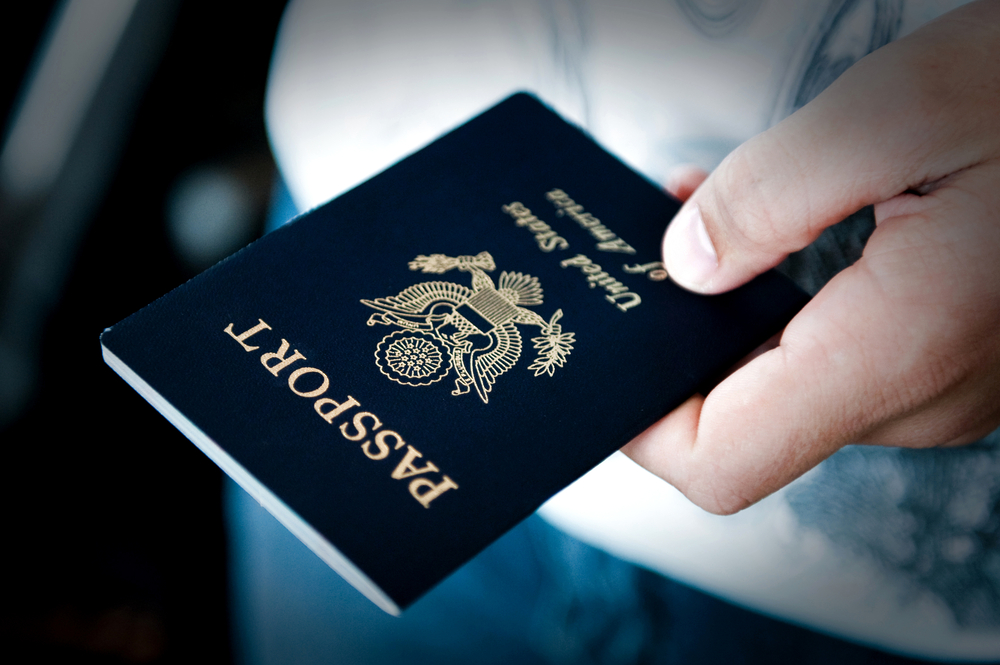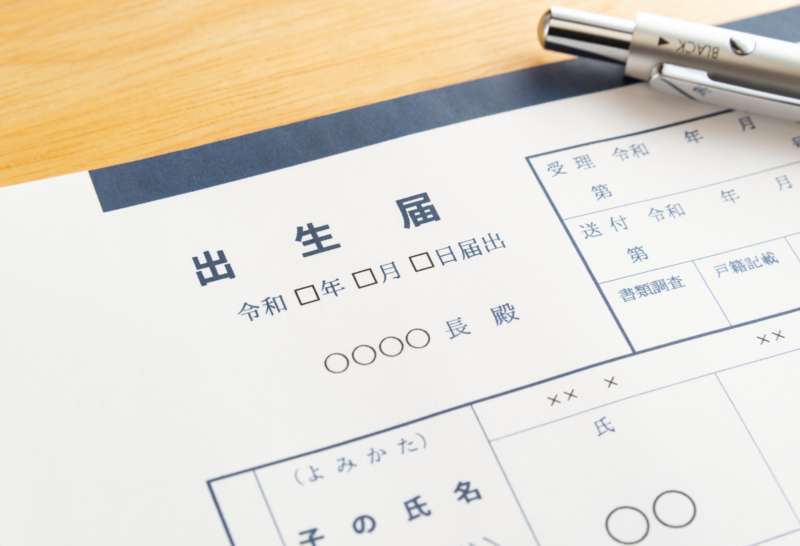Being pregnant or giving birth in Japan comes with a lot of paperwork. If your Japanese isn’t that great, this may be a very difficult process. However, not filling out the necessary forms can cost you assistance money or even your child’s status of residence. That’s why in this article, we’ll talk about all the existing paperwork that can be filed from the moment you know you’re pregnant to the time you’re about to give birth. To confirm which forms apply to you or to answer any questions you may have, please consult with your local municipality in person or online.
What You Need to Do Before Giving Birth
◆Get a “Boshitecho” (Maternity Health Record Book)

After getting a positive result on a pregnancy test (available at all pharmacies and drug stores), you’ll have to confirm it with an OB-GYN. Once the fetal heartbeat is detected at around the 5th-8th week, go to the health center located at your local municipality (as designated on your certificate of residence) and receive your “boshitecho” (maternity health record book). While there, you can also receive a voucher for a health check-up for pregnant women. The health record book entitles you to financial aid for healthcare costs related to pregnancy, so make sure you get it as quickly as possible.
To receive a maternity health record book, you usually have to present the following documents:
- Patient card from the hospital where you got your pregnancy test results,
- A document confirming your MyNumber,
- Personal ID.
At some municipalities, you may also have to file a pregnancy certification that you get at the hospital. Please consult with your local municipality either in person or online to find out which exact documents you will need.
◆Consult with Your Employer About Maternity and Childcare Leave
Many expecting women are unsure of how or when to inform their employer about their pregnancies. In Japan, it’s common to contact your company about it around the 3rd or 4th month of pregnancy and to start talking about maternity leave (before and after childbirth) and childcare leave. However, if you’re experiencing a lot of morning sickness, you may want to contact your employer earlier.
Maternity Leave Before Childbirth: You can apply to get six weeks off before your due date (14 weeks off in case of twins or more). The application process differs depending on the company.
Maternity Leave After Childbirth: In most cases, you cannot return to work for eight weeks, counting from one day after giving birth. However, if the doctor clears you, you can apply to return to work after the six-week mark.
Childcare Leave: Both men and women can apply for childcare leave for a specified amount of time until the child turns 1.

◆Apply for Maternity Benefits and a Lump-Sum Birth Allowance
There are two things pregnant women should apply for. You can get a lot of money this way, so make sure to inquire about this with your employer or health insurance society.
Maternity Benefits (出産手当金)
Aim: Compensation for loss of earnings due to childbirth-related absence from work
Eligibility: People covered by their companies’ health insurance plans
Amount per day: (Average of your standard monthly remuneration* from the past year / 30 days) x 2/3
How to Apply: Apply using a form received from your employer
* The “standard monthly remuneration” here is the “average monthly earnings” that determine your social insurance premiums.
Lump-Sum Birth Allowance (出産一時金)
Aim: Help childbirth-related financial expenses
Eligibility: People covered by the National Health Insurance or their companies’ health insurance plans
Amount: 420,000 yen per child (404,000 yen if the hospital or clinic where the recipient gives birth does not belong to the Japan Obstetric Compensation System or if the birth occurred prematurely before the 22-week mark).
How to Apply: Through the recipient’s health insurance society or association. If the expecting recipient was covered by their previous employer’s health insurance plan for at least a year, then, up to six months after they quit, they can choose to apply for the lump-sum birth allowance through either their previous employer’s health insurance or their husband’s health insurance. The final amount may differ depending on the type of health insurance, so please check to make sure how much you are entitled to.
Post-Childbirth Paperwork
◆File a Birth Registration Within 14 Days of Giving Birth (in Japan)
Every birth has to be registered by either the mother or the father within 14 days (counting the day of the birth) at the municipal office of the area where the birth took place or where the parents reside. In order to register a birth, you’ll need a filled-out birth registration form, a certificate of birth (you can obtain both from the medical facility where you’ve given birth), and a maternity health record book. Some foreigners may also have to bring their passports, residence cards, or special permanent resident certificates. Every municipality is different, so please check their websites to make sure what documents you will need. The birth registration form has a space for the child’s name, but please note that you can only use katakana and kanji (the latter only applicable for citizens of countries that allow names to be written using kanji characters).
In the case of one foreign parent and one Japanese parent, the child automatically gets Japanese citizenship, so there is no need to apply for a status of residence.
Incidentally, there is also something called the birth report form (出生連絡票), which is submitted to the health center at your local municipal office. It’s to help officials keep track of all the households with newborns and coordinate house visits. You should submit it as early as possible.
◆Apply for Child Allowance Within 15 Days of Giving Birth (in Japan)
The Child Allowance system allows guardians to claim money for childcare until the child turns 15 (March 31 of when their third year of junior high ends). You apply for child allowance at your local municipality; you can pick up the child-allowance application form in person or online. Besides it, you’ll also need personal ID, a document confirming your MyNumber, the applicant’s passbook or cash card, and the applicant’s health insurance card. If you’ve entered the country after tax basis assessment day, you’ll also need to bring a copy of your passport. If your earnings were equal to or below the set income cap, you will receive three yearly payments corresponding to 10,000 – 15,000 yen per month, depending on how many children you have and their age.

◆Apply for a Status of Residence Within 30 Days of Giving Birth
1) In Case of Two Foreign Parents
1. Register the birth at your local municipal office (as explained before) and receive a birth registration acceptance certificate (出生届受理証明書).
2. Within 30 days of the child’s birth, go to the local Immigration Bureau and file the following documents to apply for a status of residence for the child. If everything’s in order, present your passport and receive a residence card. You’ll need:
• Application for permission of acquisition of residence status (在留資格取得許可申請書)
• Document certifying the child’s birth (birth registration acceptance certificate or maternity health record book)
• Copy of the certificate of residence listing all the members of your household, including the child
• The child’s passport (can be filed later)
• Copies of the parents’ residence cards and passports
• Document certifying the occupation and income of the parents or guardians (certificates of employment, resident tax payment certificates)
• Questionnaire
3. Go to the embassy or consulate of the country that your child is a citizen of, register their birth there and apply for their passport. This can also be done prior to Step 2.
2) If One Parent Is a Permanent Resident
When a child is born in Japan to at least one parent who is a permanent resident, then the child’s residence status is “Spouse or Child of Permanent Resident,” but only if the plan is for them to keep living in Japan. After a child is granted the status of residence, they will not lose it in the event of their parent no longer being a permanent resident. Parents have up to 30 days after birth to apply for their child’s residence status in Japan.
3) If One Parent Is a Permanent Resident and the Birth Occurs Abroad
If one of the parents is a permanent resident of Japan and their child is born abroad, then the child’s residence status is “Long-Term Resident”. Even if the child’s parents then return to Japan and obtain Japanese citizenship, the child’s status will still be “Long-Term Resident”. Parents have up to 30 days after birth to apply for their child’s residence status in Japan.
4) If a Parent Has a Work Visa
When a child is born in Japan to a parent residing in Japan on a work visa, then the child’s status of residence is “Dependent”. Parents have up to 30 days after birth to apply for their child’s residence status in Japan, unless they’re planning to leave Japan within 60 days.

◆Apply for the Child’s Medical Expense Assistance in Japan Within Three Months
If a person has a Japanese certificate of residence and is enrolled in National Health Insurance or social insurance, then their children are entitled to medical expense assistance (医療費助成). Every municipality individually decides until what age this continues, the income cap, or whether the parents have to pay anything out of pocket. That’s why you apply for this assistance at your local city, ward, or village office. You’ll need personal ID, the child’s health insurance card (if you still haven’t received one, the health insurance card of the child’s guardian will suffice), your personal seal, and a document confirming the child’s MyNumber.
Being pregnant and giving birth in Japan can come with a lot of paperwork. We hope that this article has helped you understand which forms you will need so that you can prepare in advance.
Header credit: PIXTA
If you want to give feedback on any of our articles, you have an idea that you’d really like to see come to life, or you just have a question on Japan, hit us up on our Facebook!
The information in this article is accurate at the time of publication.

